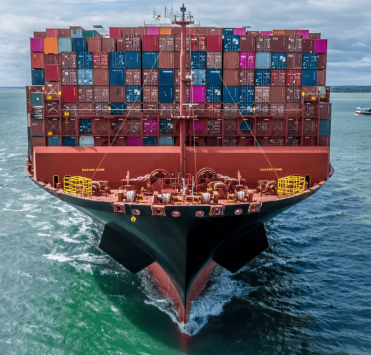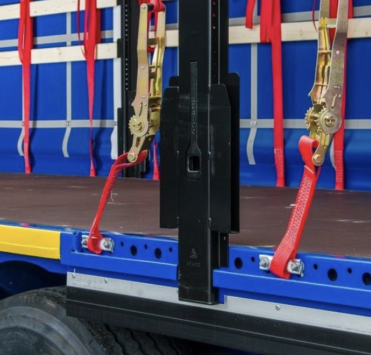Correct packing of cargo for container transportation: key recommendations

Container transportation is one of the most convenient, reliable and cost-effective ways of international logistics, especially when it comes to the delivery of goods over long distances. However, even with this type of transportation, it's important to take a smart approach to packaging to reduce the risk of damage and avoid unnecessary costs. In this guide, we will explain how to choose the right tare, reinforce and distribute the cargo, prepare documents and protect the goods from external factors.
Choosing the right tare and packaging
When organizing international container shipping, it is necessary to take into account:
- The type of cargo (fragile, loose, liquid, hazardous, etc.).
- Conditions of the route (cargo delivery by sea, land transportation, multimodal transportation).
- Requirements of logistics operators and customs authorities.
Below are examples of the most popular packaging options:
- Cardboard boxes. Good for lightweight goods, but require additional protection against moisture (film or lamination) and impact (shock absorbing pads).
- Wooden crates. Ideal for fragile and heavy items, minimizing mechanical impact. When exporting to certain countries, crates must have phytosanitary treatment.
- Pallets (pallets). Simplify handling and optimize space in the container. It is important to secure the cargo with stretch film or straps.
- Big bags. A convenient solution for bulk goods (grain, fertilizers), but they are not suitable for fragile goods.
- Metal barrels. Necessary for the transportation of liquids, oils and chemicals, as they provide airtightness.
When planning the right packaging for ocean transportation, consider high humidity and possible sudden changes in temperature. For land transportation, consider vibration and mechanical stress.
.jpg)
How do I secure my cargo in the container?
Even if you have chosen the perfect packaging, cargo can be damaged if it is not properly secured inside the container. To avoid shifting cargo:
- Use securing straps and stretch straps. These securely fasten boxes, crates or pallets to prevent them from shifting.
- Use cushioning materials. Foam, bubble wrap and cardboard pads reduce the risk of damage to fragile goods.
- Fill voids. Special inflatable bags, airbags or just dense cardboard will keep cargo from shifting in transit.
- Place heavy items at the bottom. Place lighter items on top. This reduces the risk of tipping over during sea swings or sudden braking.
Improper stacking can result in damage to the goods and the container tipping over when it is moved.
How to distribute the weight in the container correctly?
Even weight distribution affects safety during loading, unloading and during transportation. Basic rules of thumb:
- Distribute the weight over the entire area of the container, do not concentrate the weight in one point.
- Place heavy items in the bottom layer to lower the center of gravity.
- Monitor the total weight of the shipment and keep track of the load capacity of the container (volume and tonnage).
- Stack the shipment with interlayer spacers to prevent the bottom boxes from squeezing through.
- If you have LCL shipments, make sure that incompatible goods (e.g. food and chemicals) do not come into contact.
Protect your cargo from external factors
When shipping by sea, containers can be exposed to rain, sea fog, condensation and large temperature differences. To minimize the risks:
- Use moisture barrier film and airtight packaging, especially for hygroscopic and sensitive goods.
- Use anti-corrosion coatings for metal parts and products.
- Control humidity levels in the container by placing dehumidifiers (silica gel, moisture absorbers).
- For temperature-sensitive shipments, choose refrigerated containers.
Labeling and documentation: how to avoid problems?
Proper labeling and complete documentation simplify logistics and speed up customs procedures:
- Label clearly: indicate where the top, bottom, center of gravity, information about fragile goods or rolling restrictions.
- Use international symbols (e.g. fragility or hazard warning signs).
- Label dangerous goods according to ADR and IMDG standards.
- Prepare a complete set of documents: invoices, packing lists, certificates of origin, phytosanitary and veterinary documents (if required).
FAQ: Frequently Asked Questions
1. How to choose packing for container transportation to Ukraine?
It depends on the type of cargo and transportation conditions. Light goods are packed in cardboard, fragile and heavy - in wooden crates, liquid - in metal barrels.
2. What mistakes do companies most often make when packing and securing cargo?
The main mistakes are incorrect weight distribution, lack of cargo securing and ignoring labeling requirements.
3. Is it necessary to insure the cargo?
It is recommended to insure valuable, fragile or dangerous goods. Insurance helps to compensate losses in case of force majeure.
4. What are the weight and volume regulations for different types of containers?
A standard 20-foot container (Dry Van) can typically hold up to 28 tons of cargo, while a 40-foot container can hold up to 30 tons (but exact figures depend on the line and type of container). The volume also varies.
5. Can glass and fragile goods be shipped in a container?
Yes, provided additional packaging (wooden crates, foam, bubble wrap, etc.) is used.
6. How to speed up customs clearance of the container?
Observe labeling requirements, prepare documents in advance and work with professional customs brokers.
Proper packing of cargo is the basis for safe and efficient container transportation to Ukraine (and other countries). When choosing containers and securing the cargo, take into account the nature of the goods, climatic conditions, rules of logistics operators and customs. Do not forget about labeling and a full set of documents - this will simplify transportation and help to avoid fines.
If you need professional assistance in organizing international container transportation, contact Save Pro Solutions experts. We will provide the optimal solution for your business and help you through all stages of the logistics chain!









